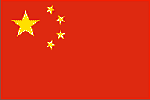 |
 |
The China Syndrome
By : Jim Pinto, What is stunning about China is that, for the first time, a huge country competes both with very low wages and high tech. Lower prices. Better goods. Newer plants. More innovation. Unless the U.S. can deal with these new industrial realities, it will continue to suffer a loss of economic power.

ISA InTech "Channel Chat", September/October 2010 Part 1 of a two-part series. The second part of the series will run in November/December 2010 InTech.
|
 After three decades of rapid
growth, China has officially
moved ahead of Japan to become
the world’s second-largest economy,
and is on course to overtake the U.S.
and vault into the No. 1 spot sometime
around 2025, according to projections by
the World Bank.
After three decades of rapid
growth, China has officially
moved ahead of Japan to become
the world’s second-largest economy,
and is on course to overtake the U.S.
and vault into the No. 1 spot sometime
around 2025, according to projections by
the World Bank.
Since the economic reforms of 1978, China has averaged an impressive 9.5% annual growth rate. This year, the country’s economy expanded 11.1% in the first six months, and it is on track to grow at least 9% for the whole year. I recently (July 2010) returned from an Educators’ tour of China and was dazzled with what I saw. Beijing, the capital city, still has all the old history, but with 21st century traffic and high-rise buildings everywhere. We visited the largest-ever World Expo in Shanghai, which is now the fastest-growing big city in the world, and lights up every evening like a combination of Piccadilly Circus, Times Square, and Las Vegas. It was breathtaking. Better, cheaper, fasterIn today’s global environment, who will win in the better, cheaper, and faster manufacturing race? Every country in the world is competing. In consumer products, China is grabbing a lot of the prizes. And the country is moving strongly into high-tech. IBM’s PC business is now owned by the Chinese. Will some of the somewhat ailing automation majors become Chinese also?In the past decade, manufacturing technology has expanded rapidly on a global scale. Many countries have mastered the methods, the quality processes, the execution systems, and software. In this new century, the global spread of manufacturing knowledge is having farreaching consequences. We are seeing fundamental changes in international business structures and deployment of global capital. The assumption has always been the U.S. and other industrialized nations will keep leading in knowledge-intensive industries while developing nations focus on lower skills and lower labor costs. That has now changed. What is stunning about China is that, for the first time, a huge country competes both with very low wages and high tech. Look at some facts about manufacturing in China today.
The cheap cost of Chinese goods has kept inflation low and helps America weather a recession. But there is a huge cost to the China relationship. The trade shortfall—coupled with the U.S. budget deficit—is driving the dollar ever downward, raising fears that cracks will appear in the global financial system. By keeping its currency pegged to the U.S. dollar ($) at an undervalued level, China amplifies the problem. In the meantime, America’s industrial base has eroded to a dangerous level, not only in the old segments, but in more advanced tech industries. China is adding state-of-the-art capacity in cars, specialty steel, petrochemicals, and microchips. These plants are aimed at meeting seemingly insatiable demand in China. But if China’s growth stalls, the resulting glut will turn into another export wave and disrupt American industry. Meanwhile, U.S. companies are no longer investing in much new capacity, and the ranks of U.S. engineers are thinning. By contrast, the number of Chinese engineers is growing by over 350,000 annually. Young workers and managers are willing to put in 12-hour days and work weekends, with entrepreneurial zeal to do whatever it takes to advance. And Chinese producers are hardly standing still. In a recent survey of Chinese and U.S. manufacturers by Industry Week, 54% of Chinese companies cited innovation as one of their top objectives, while only 26% of U.S. respondents did. Chinese companies spend more on worker training and enterprise-management software. And 91% of U.S. plants are more than a decade old, vs. 54% in China. Lower prices. Better goods. Newer plants. More innovation. Unless the U.S. can deal with these new industrial realities, it will continue to suffer a loss of economic power. Can America compete with China? In the November/December print edition of Channel Chat, we will discuss solutions for the China challenge. 
|
 Pinto's Points How to win in the Automation Business Go shopping - books, electronics, CD/DVD Selected advertising coming here. Contact Jim Pinto for rates. |
Return to Index of all JimPinto Writings

 Return to JimPinto.com HomePage
Return to JimPinto.com HomePage
If you have ideas or suggestions to improve this site, contact: webmaster@jimpinto.com
Copyright 2006 : Jim Pinto, San Diego, CA, USA
